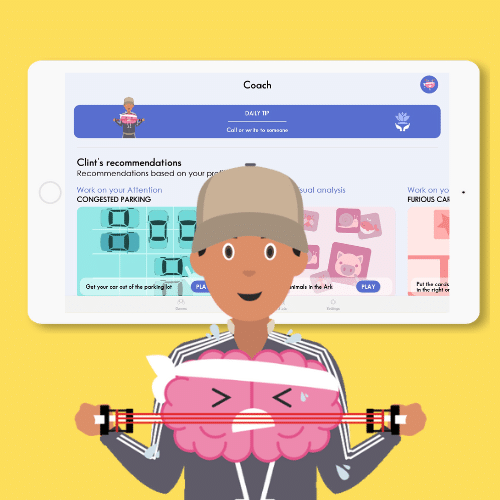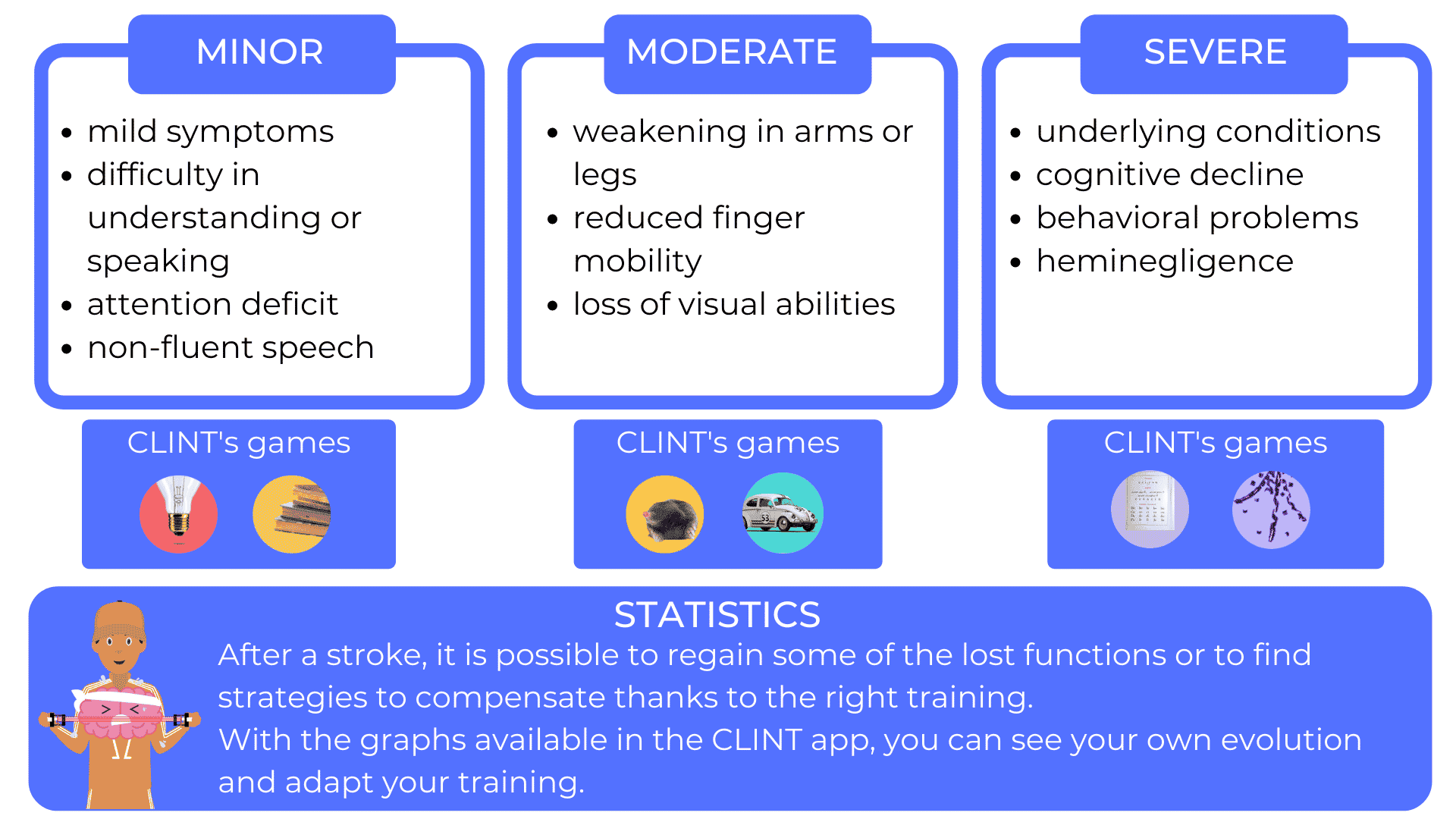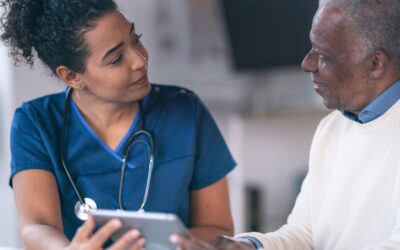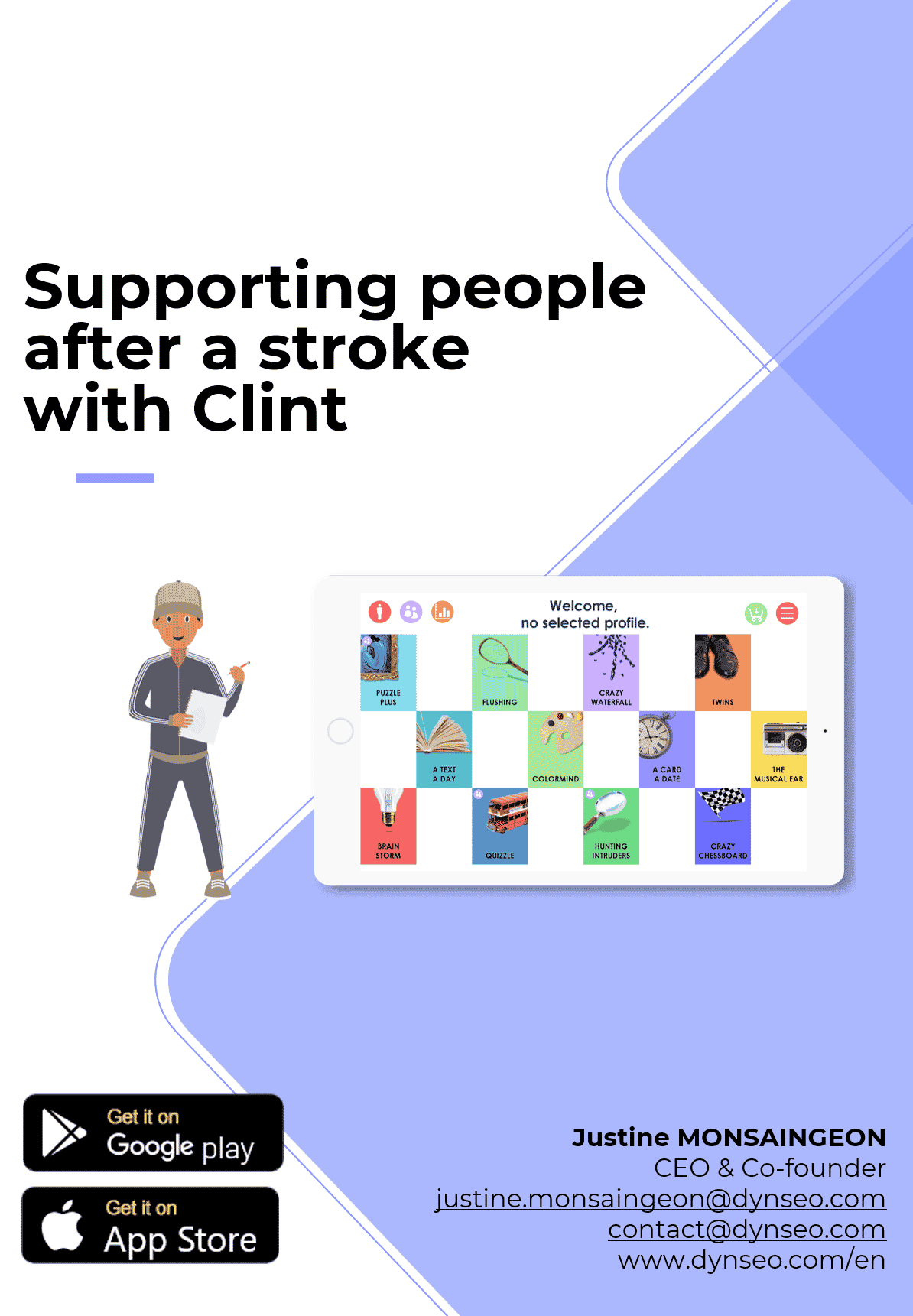Today, we want to talk about the first cause of acquired disability in adults: strokes. In the United States, every year, more than 795,000 people have a stroke. Someone has a stroke every 40 seconds.
Do you know someone who has suffered a stroke or have you experienced one yourself? Suzie is saddened to know this, but know that there are solutions to prevent a second stroke.
Stroke in the health field means: a cerebrovascular accident. It is caused by a blood clot that obstructs a brain vessel. This leads to a deprivation of oxygen and nutrients in the brain cells.
According to the American Heart Association‘s 2011 Stroke Prevention Guide, a healthy lifestyle can reduce the risk of having a stroke by up to 80%.
Together, we will review the right actions to take after a stroke.
Digital tools to support you on a daily basis
Here are two tablet apps that can help you. These apps have been developed with speech therapists, occupational therapists and neuropsychologists. They are specially designed for post-stroke cognitive rehabilitation.
CLINT

THE ROLLING BALL
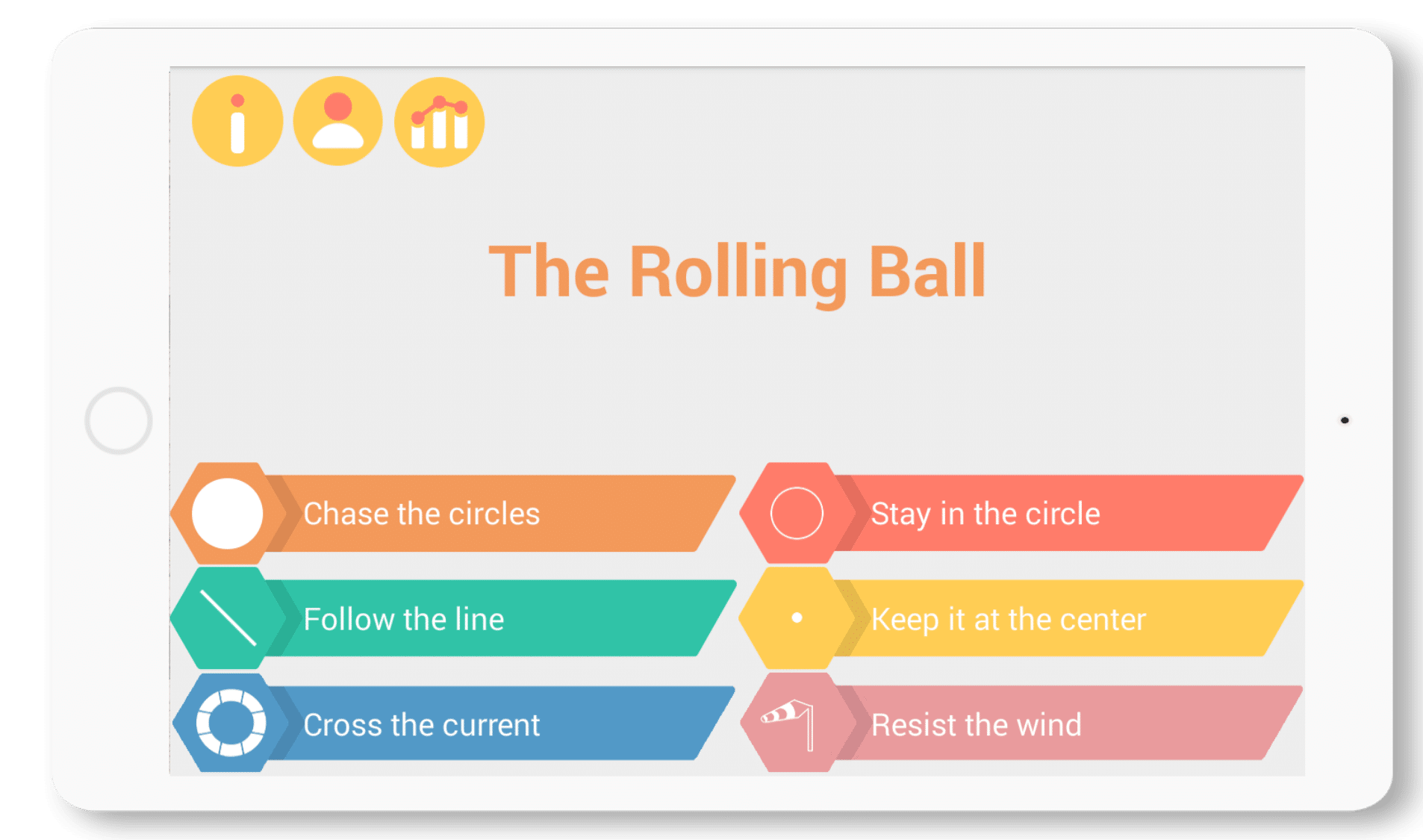
A Text A Day
Find each day a different excerpts from English literature to read.
With this game, you can stimulate the reading of texts. You can therefore work on verbal fluency and reading rhythm.
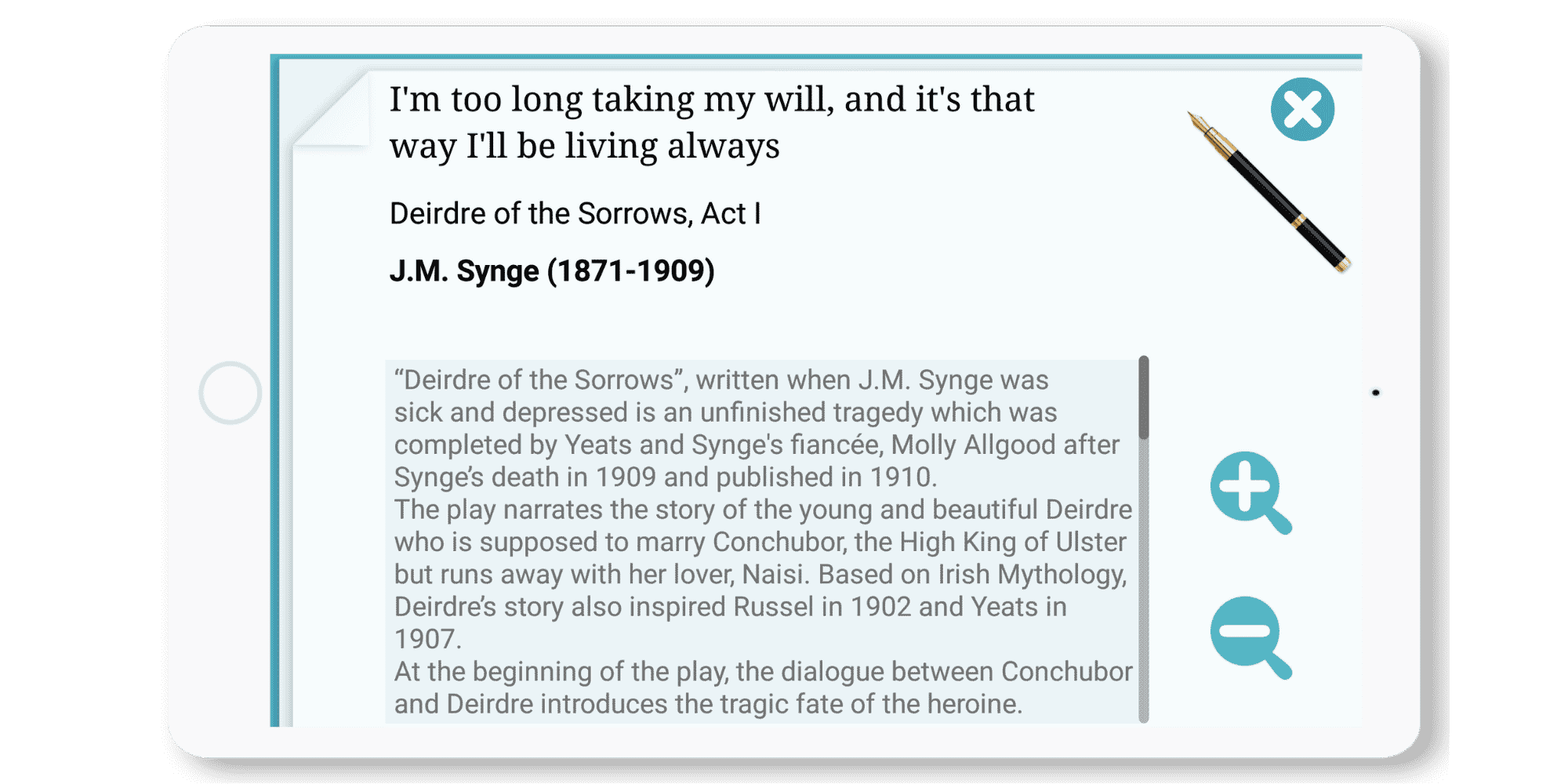
This game is different from the others in the application because it does not directly ask to perform a task or to solve a puzzle. But it can still be an activity to stimulate the language of a person after a stroke.
At the end of the reading, you can ask the person questions to make sure they understand the text. You can also ask them to summarize to stimulate phrasing in a logical way.
Noah’s Ark
Slide the animal pairs into the arch.
This game is very useful to work on finger mobility. The use of animals makes it easy to recognize the images and therefore allows this game to be used in the most severe cases of stroke.
First, you can stimulate visual scanning, as the person has to look at all the animals on the screen. In the second step, you work on the association skills to find the animal pairs.
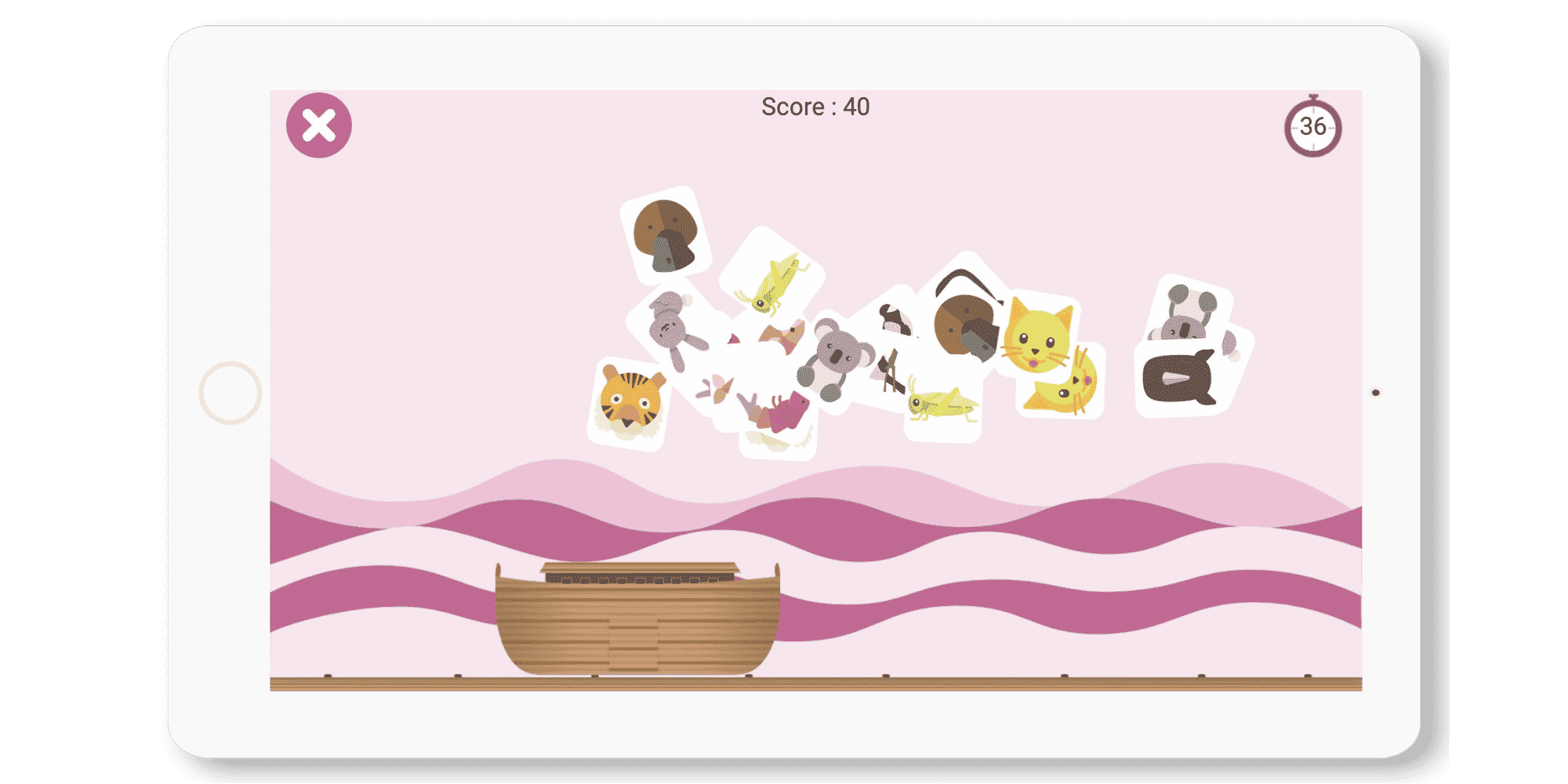
Once identified, the person must use hand-eye coordination and finger motor skills to select the correct animals and drag them to the arch.
You can ask to pick up the first animal with one finger and the second animal with another finger. You can also stimulate fine motor skills (using only the index finger, then the middle finger for example) or bimanual skills (using only the left hand first, then the right).
Puzzle Plus
Reconstruct the puzzle with the available pieces.
With this game, you can stimulate global visual analysis since the person must have the final image in mind and analyze the details of the pieces.
To place the pieces in the right place, you can stimulate the visuo-spatial construction which is based on the construction of a mental image. The person has to imagine the position of the piece according to the pieces already placed and the final image.
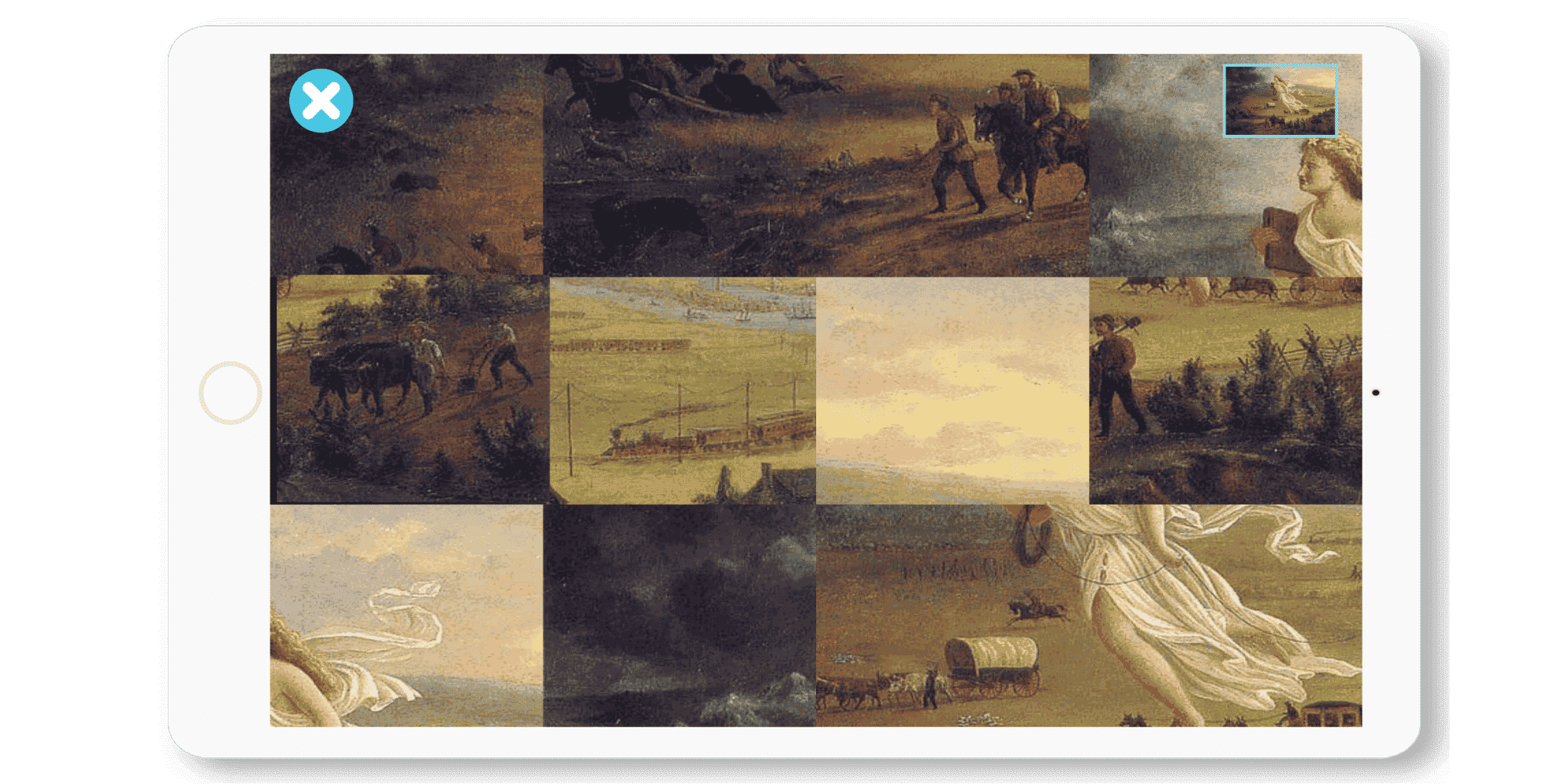
These skills are essential for orientation, so this game can be used in cases of orientation disorders.
This game can also be used in case of hemineglect, since in order to solve the puzzle, it is necessary to analyze the whole visual field.
Finally, to move the pieces, you can stimulate finger mobility as well as eye-hand coordination.
Here are all the technical sheets to accompany people who suffered a stroke with the cognitive functions stimulated
Each user of the CLINT app can request to have access to these technical sheets by email at curieux@dynseo.com.
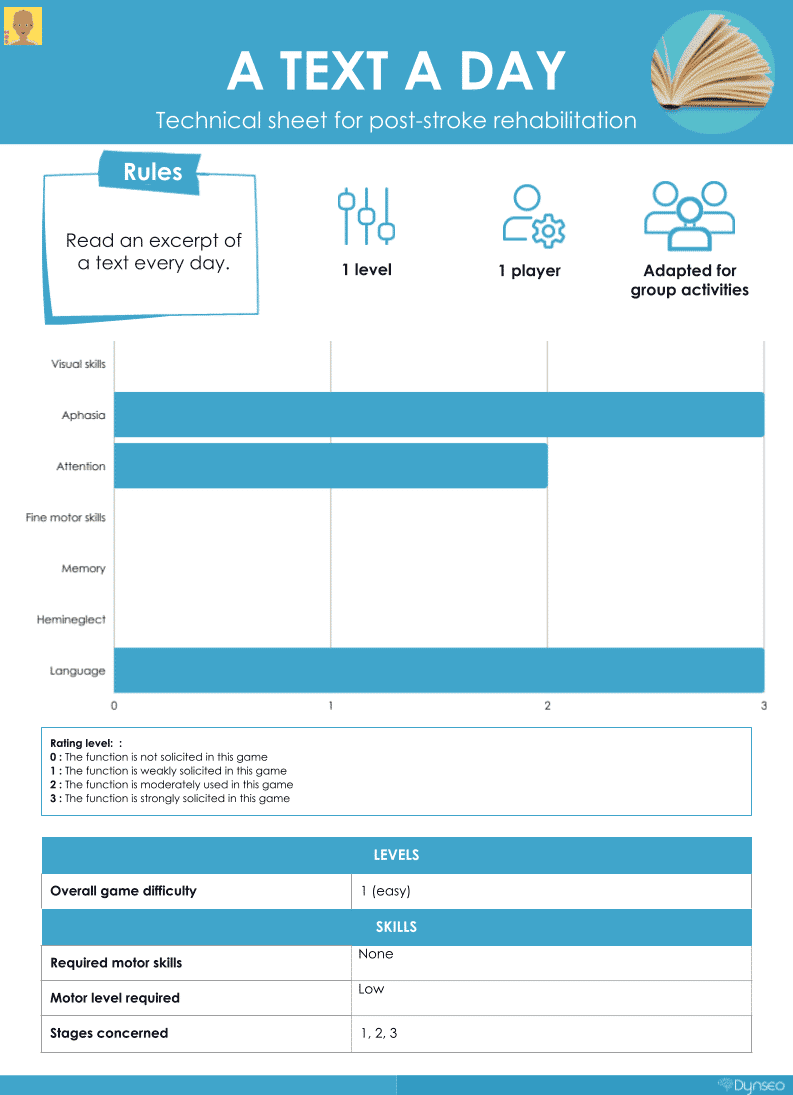
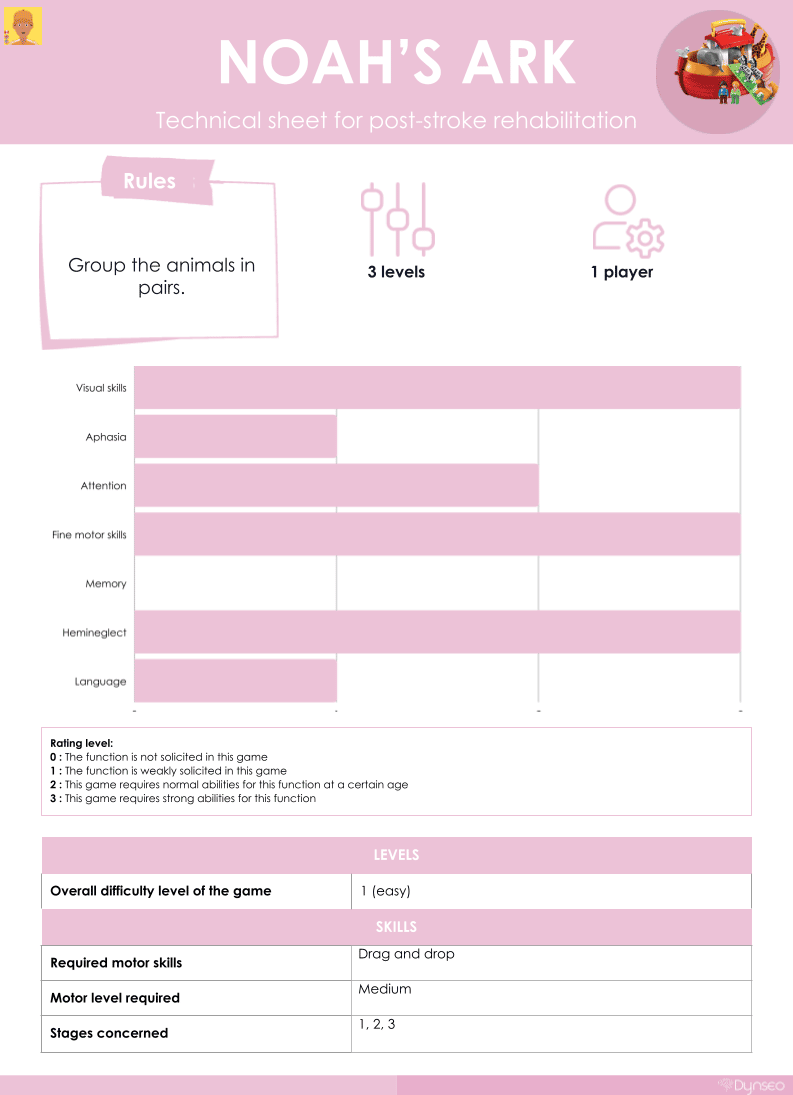
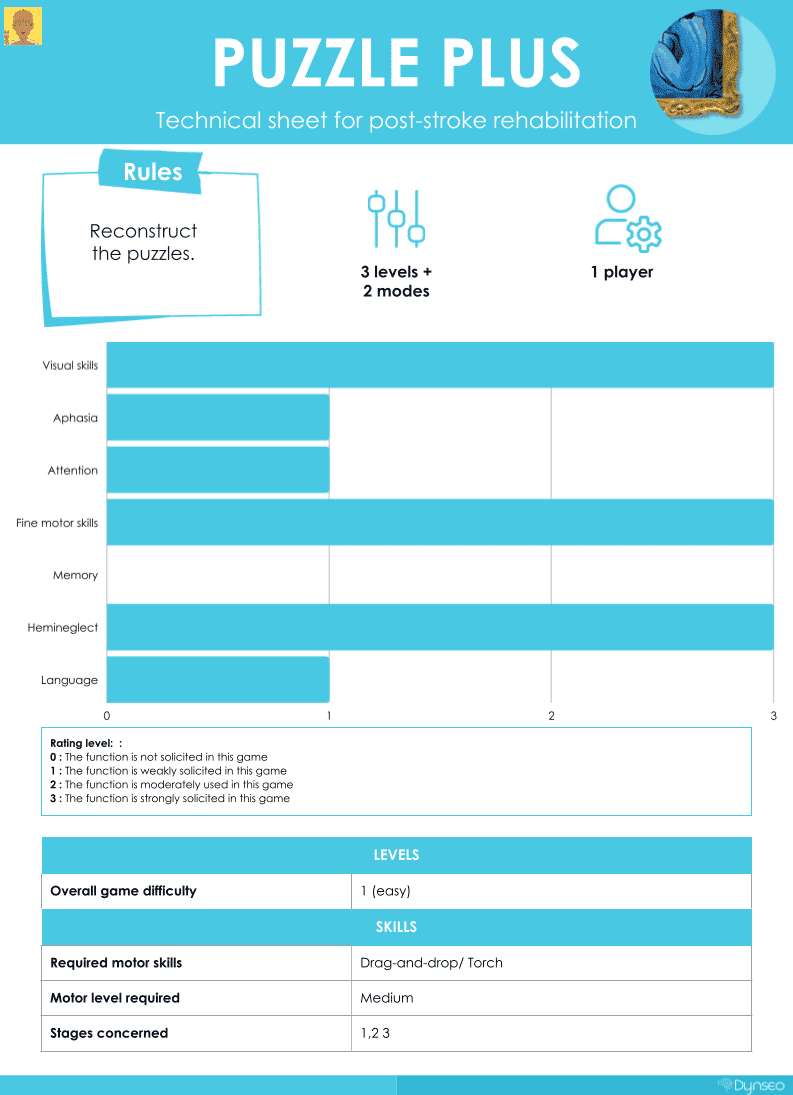
Maintain a healthy life
Overweight people and those with high cholesterol are most at risk of having a stroke. However, being overweight is often caused by poor nutrition and an unhealthy lifestyle. After a stroke, it is important to choose a healthy and balanced diet while maintaining a healthy lifestyle. This means that you must cut down on all excesses: tobacco, alcohol and sugars. For lipids, it is important to prioritize vegetable fats (olive oil, coconut oil, soybean oil) and foods rich in omega-3 (butter and eggs with an omega-3 label, fish etc.) while keeping the size of the servings reasonable. These lipids help to regulate blood pressure and cholesterol levels.
It is also preferable to avoid fatty meats (pork, lamb, beef) and to prefer lean meats (chicken, veal). In fact, animal fats are likely to increase the level of bad cholesterol in the blood.
After a stroke, you must do things intentionally to maintain a normal weight. This is why it is crucial to practice a sport adapted to your situation. A sedentary life leads to excess weight gain. You must choose an activity that suits you best in order to exercise regularly (at least 3 times a week). It should aim to improve your motor skills. Proper diet and lifestyle will help prevent a second stroke.
Rehabilitative and preventive therapy
A stroke can have more or less severe consequences. These are mostly joint and muscle stiffness. These symptoms have a significant impact on people’s quality of life. Solutions exist to overcome these problems, you can opt for a rehabilitation therapy to relieve stiffness. There are several options to choose from. For example, a neurological treatment from a spa can be effective. Thermal spas are adapted to the needs of patients. Other digital apps (Coachs or the Rolling Ball) presented below also provide a valuable help.

In addition, a kinesiologist can be consulted. The role of this specialist is to help the patient improve his or her functional and physical abilities. Kinesiologists are referred to as health educators. Of course, rebuilding yourself after a stroke is not easy. Besides the help provided by specialists, activities such as music, drawing or writing will help you learn how to rebuild yourself better. Other professionals inlude: physiotherapist, orthopaedist, occupational therapist and social service assistant.
Advice on how to cope with everyday life
Loss of motor skills, emotional instability, visual problems… All these problems can occur after a stroke. Once back at home, it is useful to adopt good reflexes if you want to improve your quality of life as the days go by. Take advantage of innovative solutions, whether it’s for washing, dressing or getting out of bed in the morning. There are clothes that open from the front, shower stools, bed elevators, etc. Don’t hesitate to use them!
Translated with www.DeepL.com/Translator (free version)
Other articles you might be interested in:
Reconstructing After Stroke: Redefining Identity and Goals.
A stroke is a serious medical condition that occurs when blood flow to the brain is interrupted, causing damage to...
The Different Types of Stroke Explained: Ischemic, Hemorrhagic and TIA.
A stroke is a serious medical condition that occurs when blood flow to a part of the brain is interrupted or reduced,...
Preventing Stroke Recurrence: Measures and Lifestyle Changes.
A stroke is a serious medical condition that occurs when blood flow to the brain is interrupted, causing damage to...


